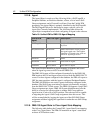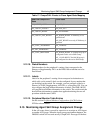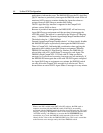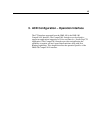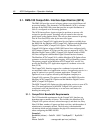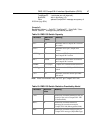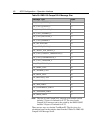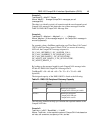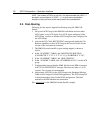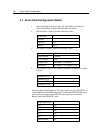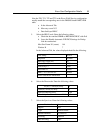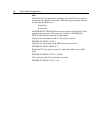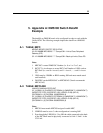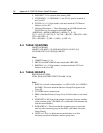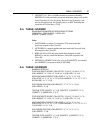
50 ACD Configuration – Operation Interface
50
nSVC - the number of SVCs on one link. It is recommended that nSVC = 1
be used in most situations. If nSVC > 1, it is quite more complicated
situation so that you have to take many factors into consideration.
3.2. Post-Routing
Following are the steps to support Post-Routing using the DMS-100
Switch:
1. Set up one ACD Group on the DMS100 switch that can have either
ACD Agents or no ACD Agent. If no ACD Agent configured in the
ACD Group, overflow to another ACD Group has to be configured for
the ACD Group.
2. Activate the DV-CALL-RECEIVED-C message and enable the Call
Redirect capability for that ACD Group in the Service Profile for the
session of the associated environment.
3. The DMS100 switch datafill for post routing support is shown as
follow:
4. In the “SCAISSRV” TABLE, add “ROUTING35$ ROUTING
(CALLRECDC Y Y Y Y Y Y Y Y Y Y) (CALLREDIR Y Y Y)$”.
5. In the “SCAIPROF” TABLE, add “(ROUTING35$)”.
6. In the “ACDGRP” TABLE, add “(SCAIREDIR 10 0 N)” for the ACD
group.
7. Configured the time out that the DMS-100 allows the PIM to response
to DV-CALL-RECEIVED-C message. The time out value is 1 to 30
seconds. Two seconds is recommended.
8. Add primary ACD DN for the ACD Group in the Peripheral Monitor
Table of the Configure Unified ICM application. The ACD Group DN
is the dialed number in the Unified ICM configuration. The label
returned to the PIM identifies the destination
See, Appendix A
for the DMS100 Switch Datafill example.



